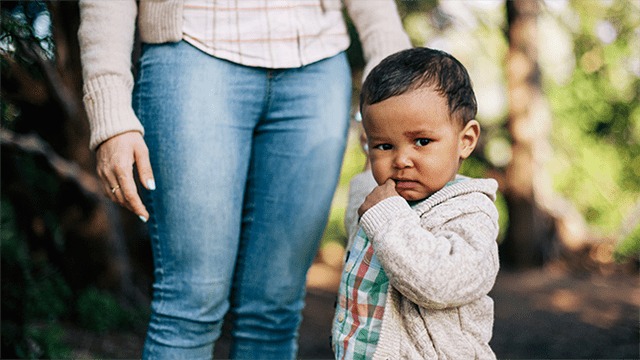Some children find changes hard, while others will take change in stride. We discuss tips for each child’s unique temperament.
“Keep it the Same” Children
Even though young children are well known for being inflexible about their routines, some children seem to be even more dependent on them. And although few children like to stop an activity they were enjoying, some children have much more difficulty with transitions. “Keep it the Same” children tend to:
- react to even the smallest of shifts—a new nipple on the bottle, a new food on their plate, or a slight change in a regular routine;
- thrive on order and predictable routines to feel safe and secure;
- need lots of time and support to get comfortable in new surroundings or with new people, with many “No, No, No’s” before they adjust; and
- have more tantrums, which can be triggered by either minor changes (a new pair of shoes) or more major (a new babysitter). Tantrums can also unfold during everyday transitions, when children are asked to stop doing something they are happily involved in to begin another activity (going from playtime to lunch).
Take Change in Stride Children
Compared to other children, these children:
- find new jackets, new friends, new foods, and new babysitters interesting; and
- adapt pretty well pretty much anywhere you take them. These are the babies who can nap in noisy restaurants, nurse wherever you happen to be, and (when older) enjoy looking around, drawing on the paper you tucked in your bag, or joining in the conversation.
Most Children Fall in the Middle
They may have an easy time with new foods, but a more difficult time with new places. They may be cautious around unknown adults, but perfectly comfortable with new peers. Given some time to get used to a change or new situation, they feel safe, at ease, and eager to explore.
Strategies for “Keep it the Same” Children
Use familiar objects to ease anxiety during transitions. A new doctor will be less scary if your child has her favorite blanket or stuffed animal in hand.
Let your child be part of the transition. Let him put the ball in the stroller bag when it is time to head home from the park or press the button to turn off the TV.
Ease into new activities. Talk about new activities first, and arrive early enough to allow your child to get comfortable.
Offer advance notice when an activity is about to end: “When this book is finished, we’re going home.”
Notice and comment when your child has made a transition: “You got into the car seat so quickly. That’s great!”
Give your child a sense of control about how he wants to make transitions. For a toddler, you might say, “Would you like to kick the ball one more time before we leave?”
Strategies for a Child Who Takes Change in Stride
Offer your child a variety of experiences. Try a new park, check out the local pool for water play, visit the library for story hour.
Be sensitive to your child’s signals. When a child is extremely easygoing, we can sometimes take for granted that any change is okay. Offer her extra support during the times when she is having trouble with a transition.
Let your child know about new situations ahead of time. For example, tell him before going to a new place or meeting someone new. Children who enjoy new situations also enjoy talking about them and looking forward to them.
Be sure to find some one-on-one quiet time to enjoy together. No matter how much a child enjoys being out in the world, there’s nothing like snuggling at home with our favorite person and our favorite story.



